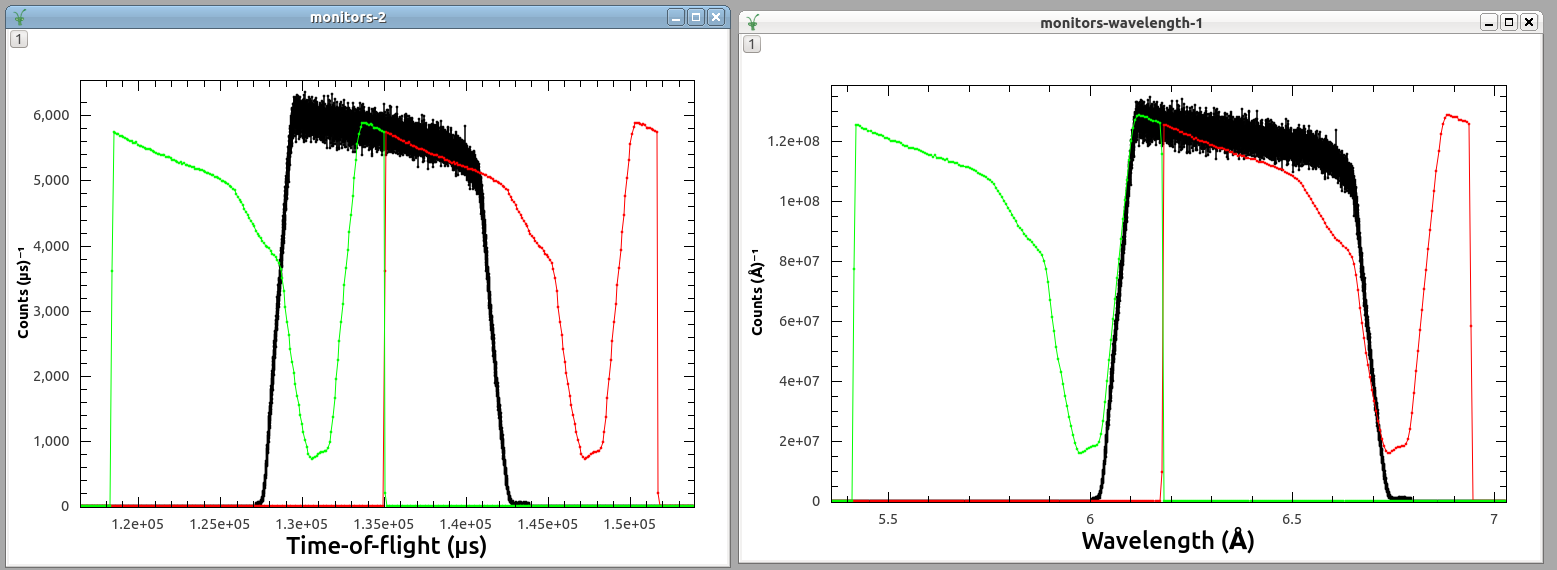\(\renewcommand\AA{\unicode{x212B}}\)
Table of Contents
| Name | Direction | Type | Default | Description |
|---|---|---|---|---|
| RunNumbers | Input | string | Sample run numbers | |
| DoFluxNormalization | Input | boolean | True | Do we normalize data by incoming flux? |
| FluxNormalizationType | Input | string | Monitor | Flux Normalization Type. Allowed values: [‘Monitor’, ‘Proton Charge’, ‘Duration’] |
| MomentumTransferBins | Input | dbl list | 0.1,0.0025,2.5 | Momentum transfer binning scheme |
| OutputWorkspace | Output | Workspace | Mandatory | Output reduced workspace |
| MaskFile | Input | string | /SNS/BSS/shared/autoreduce/new_masks_08_12_2015/BASIS_Mask_default_diff.xml | See documentation for latest mask files. Allowed extensions: [‘.xml’] |
| BackgroundRuns | Input | string | Background run numbers | |
| BackgroundScale | Input | number | 1 | The background will be scaled by this number before being subtracted. |
| OutputBackground | Output | Workspace | Reduced workspace for background runs | |
| VanadiumRuns | Input | string | Vanadium run numbers | |
| RemoveTemporaryWorkspaces | Input | boolean | True | Remove temporary workspaces and files |
Run numbers: All run numbers provided will be reduced together as an aggregate sample. Example: 2144-2147,2156 will reduce runs from (and including) 2144 up to (and including) 2147, plus 2156.
Flux Normalization Type: Normalize the number of counts by either: (1) counts recorded in the monitor, (2) total proton charge, or (3) run duration. This flux normalization is separately applied to the aggregate sample, aggregate vanadium, and aggregated background.
Mask file: The default file (BASIS_Mask_default_diff.xml) masks all inelastic detectors as well as the tips of the diffraction tubes. The file is in directory /SNS/BSS/shared/autoreduce/new_masks_08_12_2015.
OutputWorkspace: a one-histogram MatrixWorkspace is produced containing the intensities versus momentum transfer Q. In addition, a workspace of same name plus suffix _angle is produced. The latter workspace contains intensities versus scattering angle. If background runs are provided, these workspaces contain the intensities of the sample minus those of the background.
BackgroundRuns: one or more run numbers to describe the background. Background runs are reduced together.
BackgroundScale: background intensities are rescaled by this number when subtracting background from sample.
OutputBackground: if populated, a one-histogram MatrixWorkspace is produced containing the background intensities versus momentum transfer Q. In addition, a workspace of same name plus suffix _angle is produced. The latter workspace contains intensities versus scattering angle. Rescaling of the background intensities is not applied when producing these workspaces.
VanadiumRuns: a set of runs to be reduced jointly provide an incoherent and isotropic scattering to determine instrument efficiency per detector. If no vanadium is provided, all detectors are assumed to have the same efficiency. The vanadium intensity is integrated in each detector and used to normalize both the sample and the background intensities.
Determine powder diffraction pattern:
from mantid.simpleapi import BASISPowderDiffraction
BASISPowderDiffraction(RunNumbers='74799',
OutputWorkspace='powder',
BackgroundRuns='75527',
OutputBackground='background'
VanadiumRuns='64642')

The color image shows the nine diffraction detectors with a Bragg peak spilling intensity on the edges of two tubes at a scattering angle of 60 degrees.
because of the legacy hardware used at BASIS (ROC2 instead of ROC5), the diffraction detectors frame is forced to coincide with the inelastic detectors frame, introducing a shift in the minimal TOF.
In the figures below, we have represented the TOF and wavelength dependence of the intensities for the monitors (black), sample from the current pulse (red), and sample from the previous pulse (green)
111 Reflection:

311 Reflection:

The figures show that the “slow” neutrons from the previous pulse should be accounted as the fast neutrons for the current pulse.
The solution is to: (1) pile together events from the previous and current pulses; (2) discard events with under-represented wavelegths. We use the monitor counts for the last step.
Categories: AlgorithmIndex | Diffraction\Reduction
Python: BASISPowderDiffraction.py